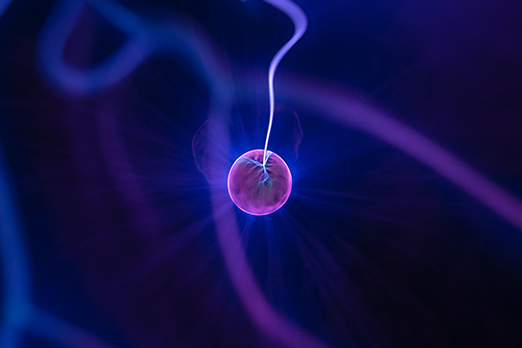What is ozone disinfection?
The word "ozone" is derived from the Greek and means "smelling" or "the smelling". If an oxygen molecule (O2) receives an additional oxygen atom, ozone (O3) is created. This can be caused by strong electric voltage fields or high-energy radiation. The characteristic smell we perceive after a thunderstorm is the smell of ozone.
But how can ozone be used for disinfection?
If ozone comes into contact with bacteria or viruses, they are destroyed by the extra oxygen atom. This also destroys the oxygen atom. One oxygen atom of the OZON (O3) is consumed and therefore odours are eliminated and pure oxygen (O2) remains. These properties make disinfection processes with ozone a versatile method, especially for industrial purposes. As a result, the industrial use of this method is increasing more and more.
Ozonation in water treatment
Ozone is mainly used for water disinfection in drinking water treatment. In addition to disinfection, ozone is also used for the environmentally friendly oxidation of iron or manganese. For this reason, the so-called ozonation is an integral part of the treatment in many waterworks. However, the reaction of ozone with pollutants poses a danger. As a result, ozonation can produce previously unknown and possibly toxic by-products.
Disinfection of interior rooms
Ozone generators for the disinfection of interior rooms are another possible application. Ozone generators produce an ozone concentration by a so-called corona discharge (which also occurs during a thunderstorm lightning). Thereby even demanding spatial conditions can be treated. In addition, this process eliminates unwanted odours. For this reason, ozone generators are used for air purification and disinfection of public transport vehicles.
Another widespread application is vehicle disinfection. By means of ozone treatment, odours and pathogenic organisms can be eliminated in places that are difficult to access.
Textile industry and washing machines
In the meantime, washing machines with ozone generators also use ambient air to disinfect textiles and remove odors. This method is also used in industrial laundries.
What are the dangers of ozone disinfection?
In contrast to chemical disinfection methods, the oxidation of substances produces fewer unwanted by-products.
However, unknown and possibly toxic products can be produced in water treatment. This happens when ozone reacts with pollutants in water. Furthermore, some pollutants cannot be decomposed with this method. Consequently, they can get into the environment.
Is ozone dangerous for humans and animals?
Ozone is a toxic oxidant. For this reason, it can cause irritation of the respiratory tract in humans and animals. This can cause symptoms such as severe headaches, inflammation of the mucous membranes, and irritation of the cough and tears.
Ozone cracking on surfaces
Ozone cracking describes typical cracks on surfaces caused by ozonation. These occur mainly in rubbers and elastomers. Their use is particularly questionable in safety-relevant components such as fuel lines and rubber seals.
Even a low concentration in the air is sufficient to initiate the formation of ozone cracks.
Advantages of P-Bod over disinfection with ozone
The P-Bod principle also enables disinfection applications in complex spatial environments. Furthermore, P-Bod also eliminates pollutants that cannot be degraded by ozonation. In addition, plasma-based disinfectors are non-toxic and can also be used on humans and animals. Finally, surfaces are not attacked by P-Bod. This also enables applications for safety-relevant components.
